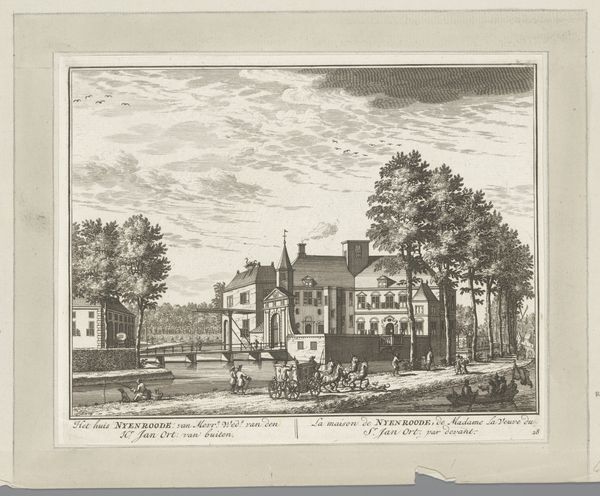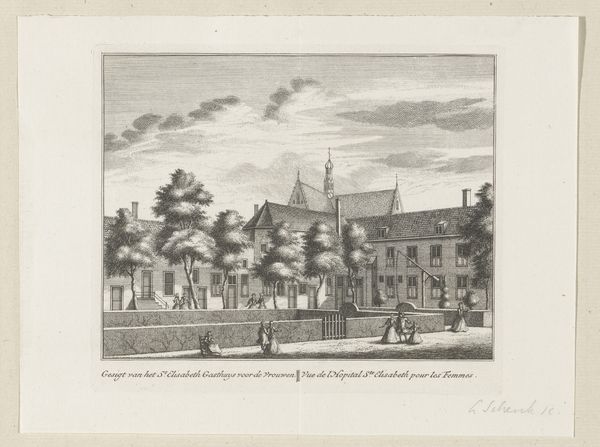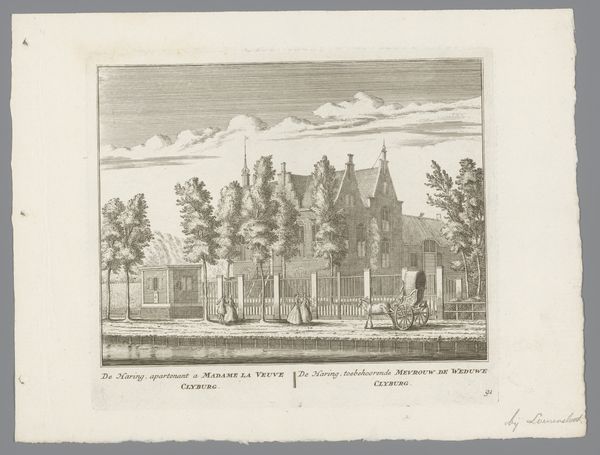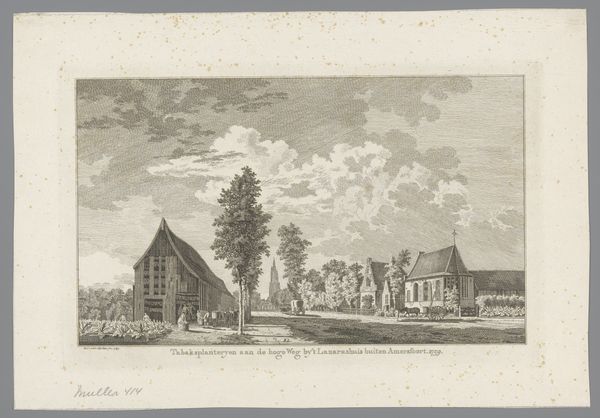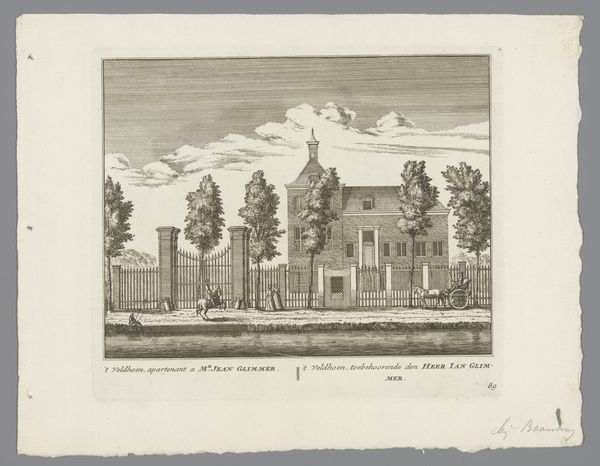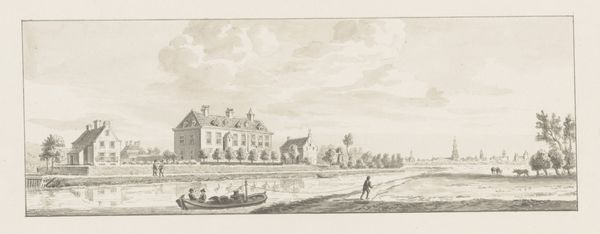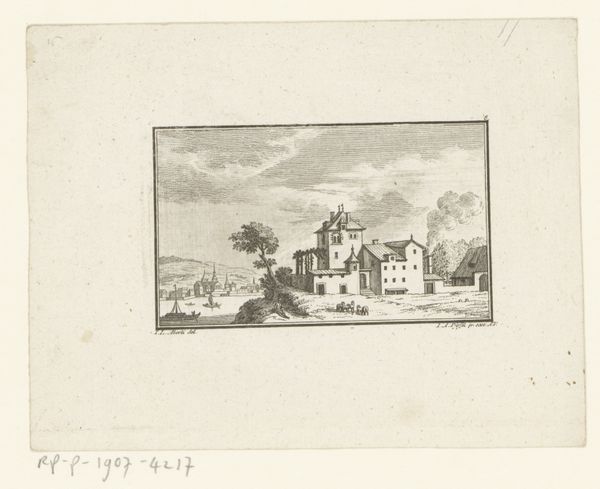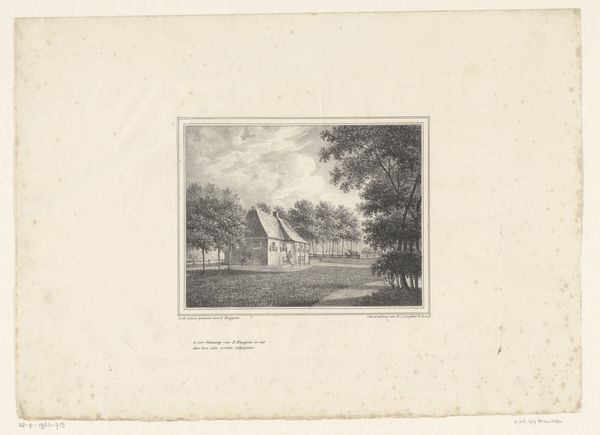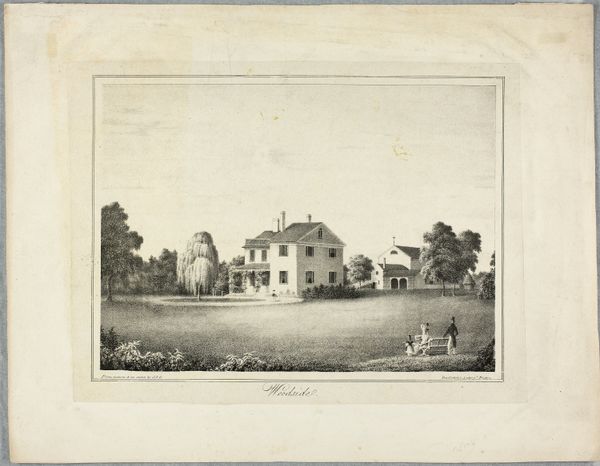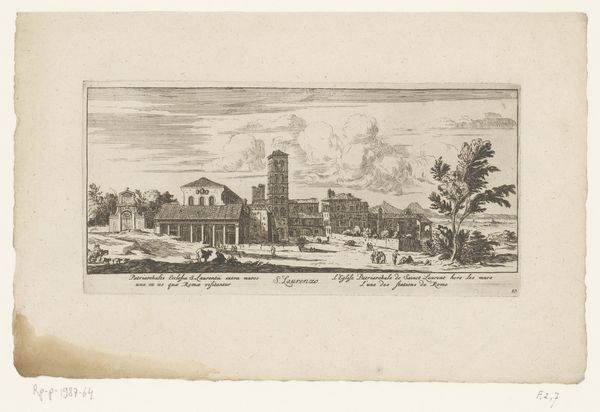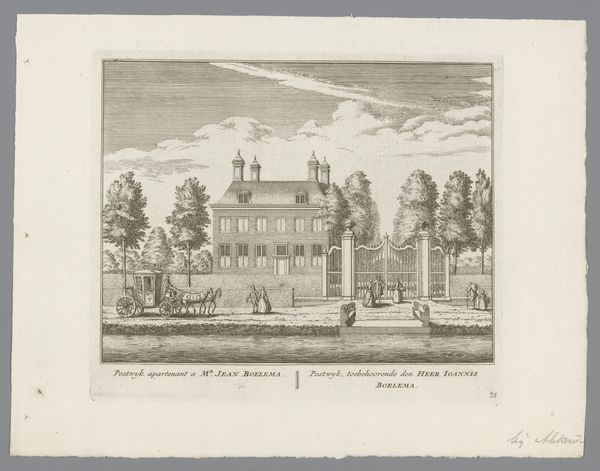
drawing, paper, pencil, architecture
#
drawing
#
dutch-golden-age
#
pencil sketch
#
landscape
#
paper
#
pencil
#
watercolor
#
architecture
Copyright: Rijks Museum: Open Domain
Editor: This is "Huis Ter Coulster te Heiloo," a drawing from 1734 by Abraham Meyling, created with pencil on paper. It’s delicate, almost like a faded memory. I'm struck by how serene it feels despite its almost stark depiction. What historical context might illuminate this drawing for us? Curator: Well, considering this drawing represents a country estate during the Dutch Golden Age, it speaks volumes about the socio-political landscape. These estates were symbols of power and wealth, embodying the mercantile elite's control. It served as a projection of the sitter's importance in that era. Editor: So, you're saying it's not just a pretty picture, but a statement? Curator: Precisely. Meyling, through his art, participated in constructing and reinforcing this image of affluence. The careful linework, the balanced composition - do you notice how the house dominates the landscape, asserting its presence? - suggests an intentional message aimed at a specific audience. It prompts one to consider, who was the intended audience? Editor: Presumably other members of the elite? I guess that explains the almost documentary feel, like a record of status. Curator: Indeed. But beyond that, it reveals how art was intertwined with power dynamics. These seemingly benign landscapes subtly reinforced existing hierarchies. What do you make of its lack of colour? Does this impact your interpretation at all? Editor: I hadn’t considered the limited palette within that context, but I see what you mean! It perhaps lends a certain weight and formality. It's fascinating how a simple drawing can reflect so much about society and class. Curator: Absolutely. It demonstrates how deeply ingrained the politics of imagery are. Art is never created in a vacuum; it actively shapes and reflects the world around it. Editor: I’ll never look at a landscape drawing the same way again. Thanks for opening my eyes.
Comments
No comments
Be the first to comment and join the conversation on the ultimate creative platform.

